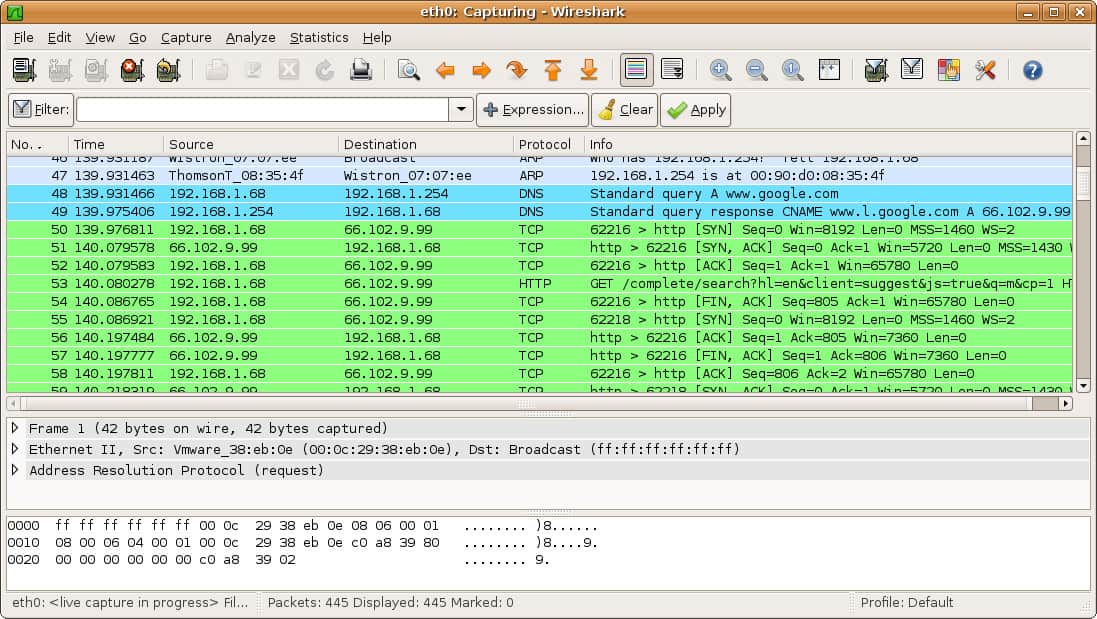

- CAPTURE PACKETS WINDOWS HOW TO
- CAPTURE PACKETS WINDOWS INSTALL
- CAPTURE PACKETS WINDOWS DRIVERS
- CAPTURE PACKETS WINDOWS FREE
Click “OK” in the Manage Interface window.Name the pipe “\\.\pipe\PacketCache” and press ENTER to save it.Click the “+” button to add a named pipe.Start Wireshark with admin rights (right-click > “Run as administrator”).Please read our blog post " Reading cached packets with Wireshark" for an in-detail description, or follow these steps: It is also possible to read packets from PacketCache directly from Wireshark (version 2.3 or later required).
CAPTURE PACKETS WINDOWS HOW TO
Remote PacketCache data saved to DESKTOP-LT4711_181112_1337.pcapįor more details on how to read from a remote PacketCache using PowerShell remoting, please see our blog post " Remote Packet Dumps from PacketCache". \ReadRemotePacketCache.ps1 DESKTOP-LT4711 Administrator Register PacketCache as a local windows service with: Start cmd.exe as administrator (shift + right-click, select “Run as administrator”).While older data us truncated at the end (i.e. This way recent communication can be retained in full, The “clever technique” we refer to is actually a simple way of removing packets from TCP and UDP With this technique just 40 MB of storage can beĮnough to store several days worth of “important” packets.


It to store only the most important packets. This might not seem like much, but PacketCache relies on a clever technique that allows
CAPTURE PACKETS WINDOWS DRIVERS
CAPTURE PACKETS WINDOWS FREE
Compress this output file, and sent it to Support with any other requested data.PacketCache is a free Windows service designed to continuously monitor the network interfaces To stop the network trace, do either a Ctrl-E, or select "Stop" from the "Capture" menu.įinally, use the "File" -> "Export" -> "File" menu to save the output to a file. When using different versions of Wireshark, some menu options might be different. This particular capture was performed using Wireshark 1.6.7 on Windows 2003 Server running a rootDSE search run from the native host to a Windows guest virtual machine.

When the operation is completed, you should see packets captured in wireshark like this: Run what operation it is that needs to be traced. This will begin tracing network packets with a source or destination port of 389 and only for local box. You can also specify a capture file in the "Capture File(s)" entry field in the same dialog, if you want to save immediately. in the resulting dialogue, deselect the "Capture packets in promiscuous mode" if it is selected (we only care about traffic coming and going from this host):Īnd in the field next to the "Capture Filter" button, enter a filter, if desired, eg: "port 389":Īnd then start the capturing by selecting the "Start" button from the same dialog. In the "Interfaces" menu, select the "Options" button for the interface the traffic will be coming in on. Once wireshark is installed and the GUI is running, click on the "Capture" menu and select the "Interfaces" submenu.
CAPTURE PACKETS WINDOWS INSTALL
Search via your favorite search engine for "Wireshark" to find out where to download it from, and how to install it. This technote requires Wireshark (formerly known as ethereal) to be installed on your Windows computer.


 0 kommentar(er)
0 kommentar(er)
